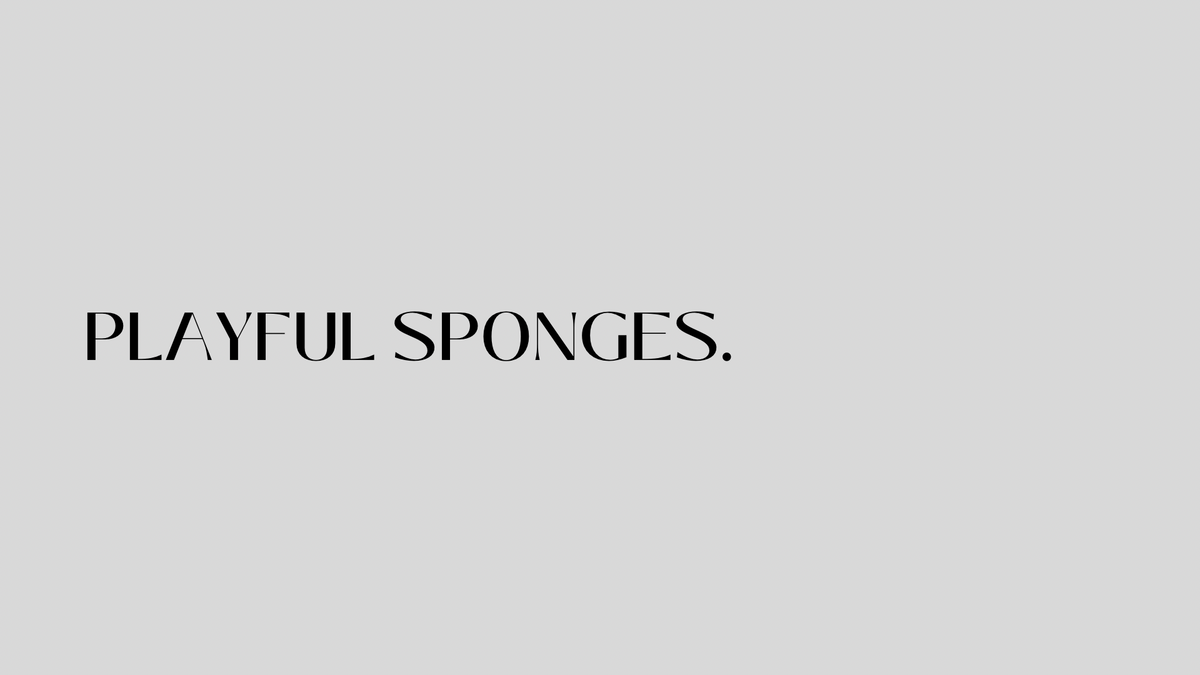Playful Sponges.

The capacity to learn is greatest between the ages of 2-7. A young child can learn almost anything with exposure. Knowing this, the desire to teach my kids everything all at once is overwhelming. But it’s important to highlight, underline, bold, italicize, and enlarge the word exposure. It’s not about drilling, lecturing, sitting still, and being quiet- it is as simple as being around it.
I must remind myself of this often as I gear up to homeschool my 3-year-old. Being in the prime of her preschool years, play rules everything. Kids learn through play. They process and practice skills, emotions, language, and complicated scenarios through playing. I always feel like I’m walking a tightrope when watching my kid play or playing with her. When should I hold back, and when should I let her lead? When should I push, question, and see what she knows?
Imagine being wrapped up in your own imagination and having someone constantly pestering you about colors, numbers, or anything else. You’re trying to get your horse to the vet for an emergency, and mom wants to know how many legs the horse has…. It’s unimportant right now, and you’re driving me crazy, Mom. Or you plan to build the tallest, coolest tower in the world, but Dad is slowing you down to count blocks.
Suppose I apply this to my life; I’m forced to acknowledge how overwhelmed I feel when trying to do something and anyone asks something differently of me. The overstimulation becomes too real too fast. I’m prone to exposing my ugly side. If I know this is true for me, why would I expect differently from my kid?
There’s always a push/pull battle within me, thinking I want to give her the most and teach her everything I can, but I also want her to have the most indulgent childhood. I worry about missing out on this sponge of a brain stage by playing it too cool. I am constantly bouncing between wanting to figure it all out and then remembering how much she’s gaining by me leaving her be.
I get in where I fit in. I play when invited and follow my kid’s lead. Sometimes her Barbies talk about big feelings, and I go with it. Sometimes they have a problem to solve, and others, they’re not doing much of anything. I don’t take Barbie time to try and facilitate learning. During play, she’s the leader, and I am the follower. Her imagination is hers alone. I do not want to take it and mold it into anything other than what and who she is.
If we were building blocks, magnatiles, or legos, she again has creative license over her choices. I won’t correct her plan or critique her strategy unless asked. I may model different ideas such as sorting by colors, counting my stack, and testing the stability of my builds which she may join me in or not. But learning and problem-solving happen automatically by playing with toys such as these. It’s more of an opportunity to sit back and observe what she’s figuring out, and it’s always something new.
It has been such a joy to watch her number sense develop. What she intrinsically understands blows me away. For example, if she has a toy with five pieces and a couple are missing. She will tell me two are missing and ask for help. However, counting and touching one at a time can be tricky for her. I am intentionally resisting the urge to make her into the smartest little baby genius with planned math lessons and, instead, keeping my eyes open for real-life applications. There are opportunities to count and think about numbers all the time in natural ways that make sense. It goes back to the initial idea of exposure. She loves to cook. There’s lots of counting in cooking. She will pick three books at story time, select 5 Barbies to keep out at a time or be told to give two cookies to Lincoln. These are all preschool-appropriate math without torture.
It’s rewiring my public school teacher’s mind that learning happens without formality. If I revisited my teaching philosophy, I knew this all along, but it wasn’t as feasible in a traditional classroom. The best learning happens when it doesn’t feel like learning is the goal. Learning should be fun. Play and experiences are the centerfolds.
So I don’t look to Pinterest or the insta mommy models as I think about preschooling. I look around at what we have, knowing it’s enough. We don’t need sparkly themes, special curriculums, or workbooks because we have our toys, dolls, blocks, art supplies, imagination, and experiences.
Reading is a beautiful magic of its own and does require explicit instruction. She has been read to and a book lover her whole life. My plans for teaching reading, phonics, and letter recognition are still developing, but I’m approaching warily. This topic is a deep dive for later. However, in keeping in line with understanding the importance of play, having realistic expectations, and creating a positive learning environment, our reading practice has been minimal and absolutely on her time. BUT SHE LOVES IT, and that’s the most essential piece.
Homeschooling has already started in this house. It looks different than I might have originally imagined. Nevertheless, learning is happening every day. It’s messy, amazing, fun, frustrating, and under our command. It’s exactly what I want for my family. Let the sponges play.